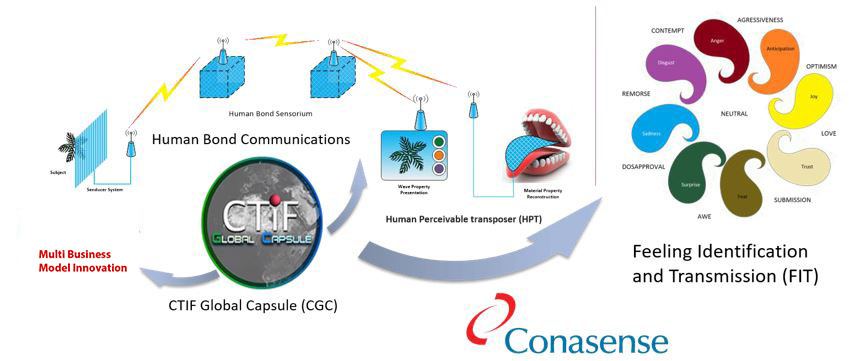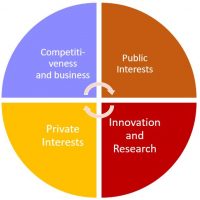Vertical Research Thematic Areas
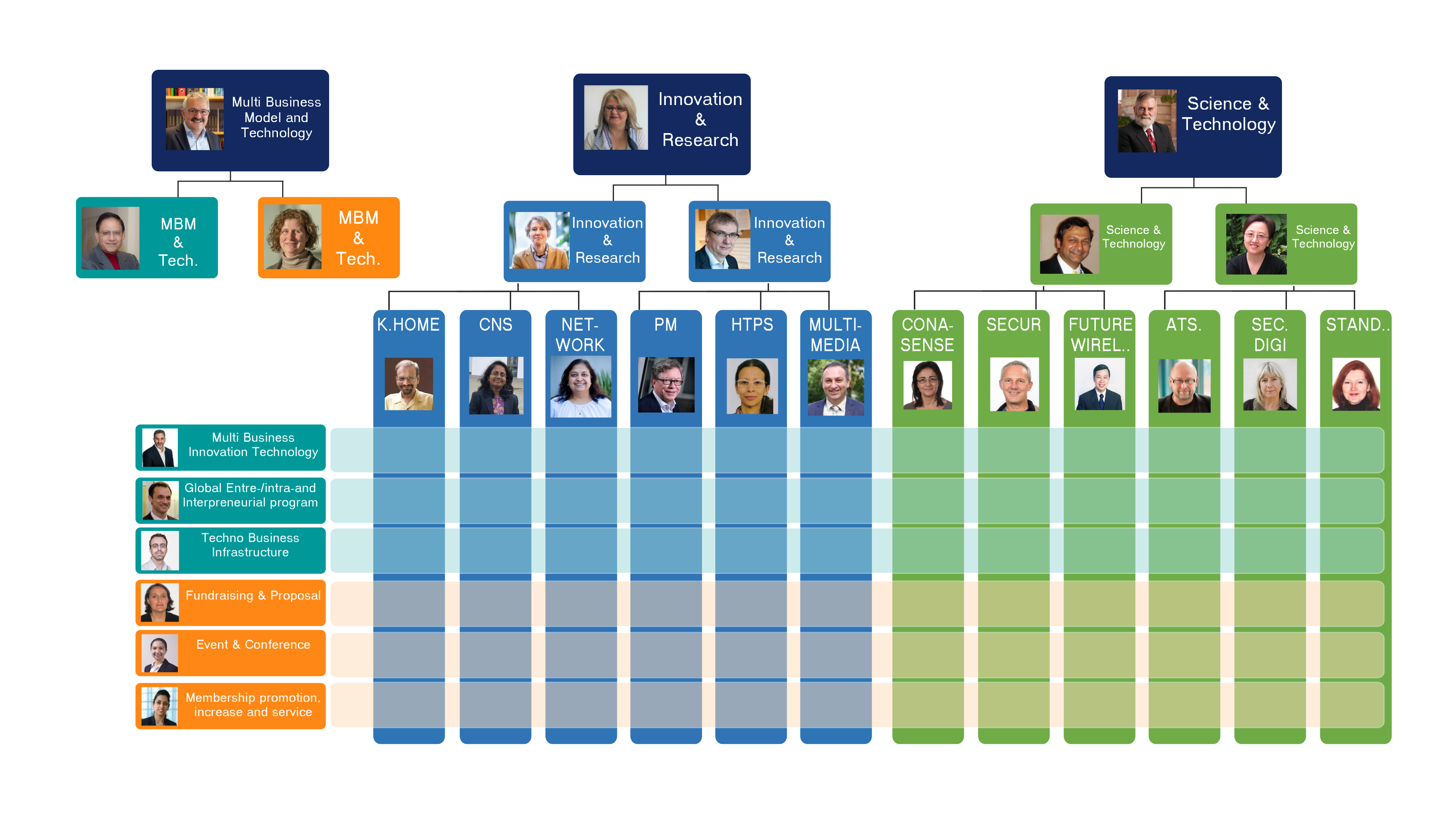
Innovation & Research

Director Didoe Prevedourou
Hellenic American University, Athens, Greece
CGC Vice President Didoe Prevedourou is responsible for vertical research thematic area Innovation & Research that ranges from ICT to translational medicine, human bond communication, envisaging possible technological solutions that bring about e.g., a transformation in the clinical and public health practices; the close connection between biomedical studies and knowledge and its exploitation through ICT tools will shape the translational character of the research accomplished by CGC.
Science & Technology

University of California, San Diego, USA
Vice President Fred Harris is in charge for science and technology. This topic covers a broad areas covering CONASENSE, Multi Media, Future wireless, Knowledge HOME, security and standardization. fred harris has long experience and expertise in these fields to bring CGC as a world leader.
01. CONASENSE - Vertical

Ernestina Cianca
University of Rome “Tor Vergata”, Italy
- Communication
- Navigation
- Sensing
- Services
Cyber-crime, persuasive technology, persuasive business models, and Human Bond Communication (HBC) together with Communication, Navigation, Sensing and Services is an important topics of research studies for CGC, as seen in the figure.
02. Multimedia Applications & Services - Vertical

University of Huddersfield, UK
- Techno-Socio Systems
- Techno-Socio Economic impact and Regulatory Framework
- Multimedia home networking
- Multimedia vehicle networking
- Edge Computing and Hybrid Clouds
- Smart Innovative Technology for Future Industry and Multimedia Applications

03. Future Wireless Technology - Vertical

Kwang-Cheng Chen
University of South Florida, USA
- Future Wireless Communication (FWC)
- Smart Networks
- Routing Protocols
- Next Generation

04. Knowledge HOME - Vertical

Sudhir Dixit
Head of the US office in San Francisco of the Basic Internet Foundation in Norway
CGC has initiated the concept of Knowledge Human Bond Communication Beyond 2050 (Knowledge HOME). It has extensions to machines and the environment, focusing not only on the two forms (i.e., visible and audible) that are possible today to transmit partial information using wireless communication technologies, but also to leverage and engage the other three senses touch (tactile), smell (olfactory) and taste (gustatory).
The Knowledge HOME approach will serve as a social-driven platform that organises ICT-related activities and offers a variety of services to its members. Knowledge HOME will make recent advancements available to the ICT society while also promoting R&D excellence, thereby becoming a powerful toolkit for researchers, industrialist, venture capitalists, regulators and academia.
The Knowledge HOME would also be a platform for exchanging the perceptive information between individuals. Altogether in its exchangeable format, this perceptive information is the KNOWLEDGE that individuals attain. A virtual part of the day-to-day life of human beings comprises their understanding and interaction with the environment through the senses that have not been considered by the current communication technologies, i.e., smell, touch and taste. At present, all senses communication would allow interaction between people separated by a physical distance based on these senses to the emergence of a real, interconnected world.
In 2020, CGC will establish a Knowledge Home Lab (KHL), which intends to investigate the socio-technological systems in the human-centric paradigm. The lab is composed of the three sub-domains, which are the individual research areas in themselves. KHL intends to work on creating and disseminating the knowledge of involving various technologies in various areas.
05. Secure Digitalization and Business Model Innovation - Vertical

Albena Mihovska
CGC Aarhus University, Herning, Denmark
The developments and innovations in the area of mobile wireless communication systems that we have witnessed over the last couple of decades have been driven by the need to deliver seamless user data connectivity anytime, anywhere and anyhow. A seamless digital experience through the ubiquitous availability of various data in combination with Multi Business Model Innovation (MBMI) opens new possibilities for conducting businesses, education, healthcare and every-day tasks, among others. This thematic area focuses on investigating how MBMI can be efficiently applied to enable security in the digital ecosystem.
The ability to secure MBMI and to surround what is really taking place in an MBMI process or an operating BM – ‘AS IS BM’ – has become a very hot topic in many businesses. Multiple factors contribute to this security issue and there are many technological ways of providing security related to this matter. The focus in this thematic area is mainly on four major issues.
The security issues move from human-based security to technology-based security and therefore often raise new security challenges. With digitalisation, humans would lose control and management of security to a large extent.
Security becomes an important issue related to how and when to be sure about business collaboration and exchange as business and BMs become increasingly network-based together with network partners that have to exchange business
06. Standardization - Vertical

Dina Simunic
University of Zagreb, Croatia
CGC has always played a critical role in the formalising of standards, understanding the critical significance they play for a sustainable and progressive society, especially to fill the critical gap existing between academic research units and the standardisation bodies. In this context, one of CGC’s relevant attributes and cherished goals is also to have a substantial standardisation, IPR portfolio and spin-offs within a short span (a few years), as shown in the figure.
How to support the effective and efficient use of standardisation to promote multi business model innovation
International Telecommunication Union (ITU), European Telecommunication Standardization Institute (ETSI), Association of Radio Industries and Business (ARIB) and the Global ICT Standardization Forum of India (GISFI) are all important collaborative partners for CGC in this work.
07. Security, Trust & Privacy - Vertical

Geir Myhrdahl Køin
Department of Micro-systems, University of South-Eastern (USN), Vestfold, Norway
To protect 5G BM and technology services in the future and accelerate the growth in connections, CSPs need a new approach to security. There are 6 key requirements: Adaptability, integration, auto-mation, rapidity, trust and privacy. The set requirement calls for 5G security to be adaptable to meet the increasingly sophisticated techniques of cyber-attackers. Hackers often dynamically tweak their attacks in real-time or near real-time, so CSPs’ defences must be at least as adaptive to respond at least as quickly.
Second Identity Management, Physical-Layer Security and Routing Protocols are all hot topics for CGC research in this field.

08. Chitt-Kaya Nivesh Sthaan - Vertical

Vandana Rohokale
Sinhgad Institute of Technology and Science, Pune
Chitt-Kaya Nivesh Sthaan (CNS) is a Sanskrit term aimed at the creation of knowledge for integrating Human Mind and Body. The terms: Chitt (Mind), Kaya (Body), Nivesh (Home), and Sthaan (Place). The present world has indeed a big challenge as human beings are suffering from mental stress, sleepless night and so on. CNS will solve these problems. CGC plans to establish an institute in the area of CNS to support human beings. CGC is already going ahead with the research development in this area.
Chitt-Kaya Nivesh Sthaan
Language and CNS define a concept that is the juxtaposition of the cognitive and physical dimensions of a human being. The concept is the proponent for involving cross-/interdisciplinary research domains (e.g., technology, medicine, humanities and social-science) on a common platform, forming an integrated solution to improve human functionalities. CNS focuses on a holistic approach to human betterment.
09. Personalized Medicine - Vertical

Hermie Hermens
Department of Biomedical Signals and Systems (BSS) Telemedicine Cluster University of Twente, Netherlands
Personalised Medicine is making fast progress globally. CGC wants to be at the forefront of research and development in this thematic area to support the society and humans to benefit from new technology. Personal Medicine calls for collaboration and coordination of the increased activities with in the field – e.g. the use of data will grow along with the rapid development of ICT. CGC wants to help and support realising the potential of personalized medicine by linking what CGC and its partners already know about the population’s diseases with cross-interdisciplinary knowledge.
CGC Researchers must have secure, quick and easy access to pseudonymised data so that new knowledge, new technology, new business models and new treatment forms can be developed to the benefit of patients. Data and knowledge are to be shared in a secure manner to be able to diagnose more precisely and target treatment more quickly than the case is today. Bio-Informatics, Multi-Sensor Networks, Body Sensors, Assisted Living, Data Protection & Ethical Guidelines are all important topics in this field.
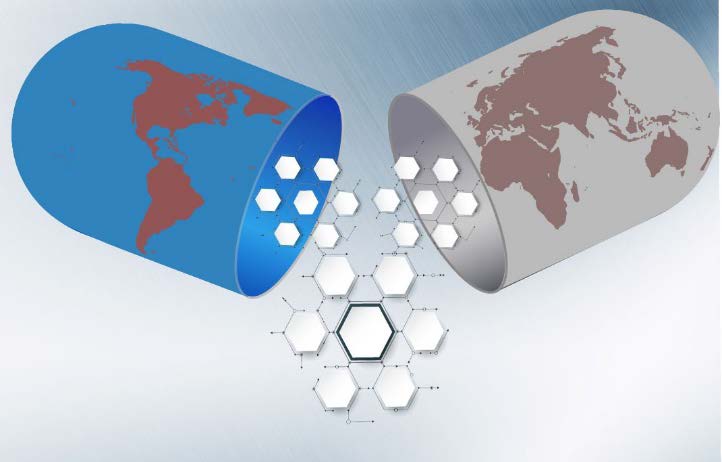
10. Network without Borders - Vertical

Neeli Prasad
CTO VehicleAvatar Inc., USA
The future of the networks will be software-defined cognitive wired and wireless networks without borders, it will be fast, intelligent, and autonomous. These cognitive networks will be self-managing (self-configuring, self-healing, self-operating, self-x) across organizations and industries. Networks without borders will consider application requirements and user expectations across physical and virtual network infrastructure through incorporating artificial intelligence orchestration and machine learning to automate operations such as management of traffic, quality of service, security, availability, reliability, and scalability.
It will enable game-changing applications that require haptic and remote-control services with guaranteed service level agreement for example from vehicle platooning to tactile internet with the human in the loop services such as telesurgery, gaming, remote robotic operations, etc.
The power of these cognitive wired and wireless networks without borders and the freedom it will provide to organizations around the world will be almost limitless.

11. Holographic telepresence systems (HTPS) - Vertical

Agata Manolova
Technical University of Sofia, Bulgaria
Holographic Telepresence Systems and the applications they enable are a critical cornerstone of ever-increasing digitalisation. A specific aim is to set up a CGC Holographic Research and Multi Business Model Innovation Research Lab comprising a cutting-edge HTPS research platform and HTPS technology enabling CGC B-labs on the CGC premises. This will provide a capacity in CGC to develop a strong research profile through the continuity of the networking activities and a capability to offer cutting-edge facilities to its early-stage researchers, overall research staff and graduate students working with HTPS.
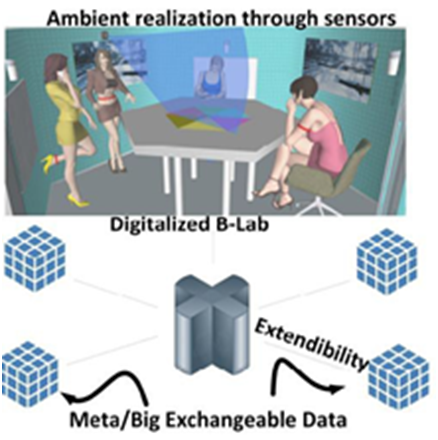
12. Autonomic Transport System - Vertical

Ari Pouttu
Centre for Wireless Communications, University of Oulu, Finland
The society will anticipate in the future mechanisms that require and allow communication of real-time information with Autonomic Vehicles and transport systems. The goal of the research is to create a flexible and efficient converged radio access and backhaul network that can carry all kind of wireless autonomous vehicles and transport systems from/to humans and machines.


